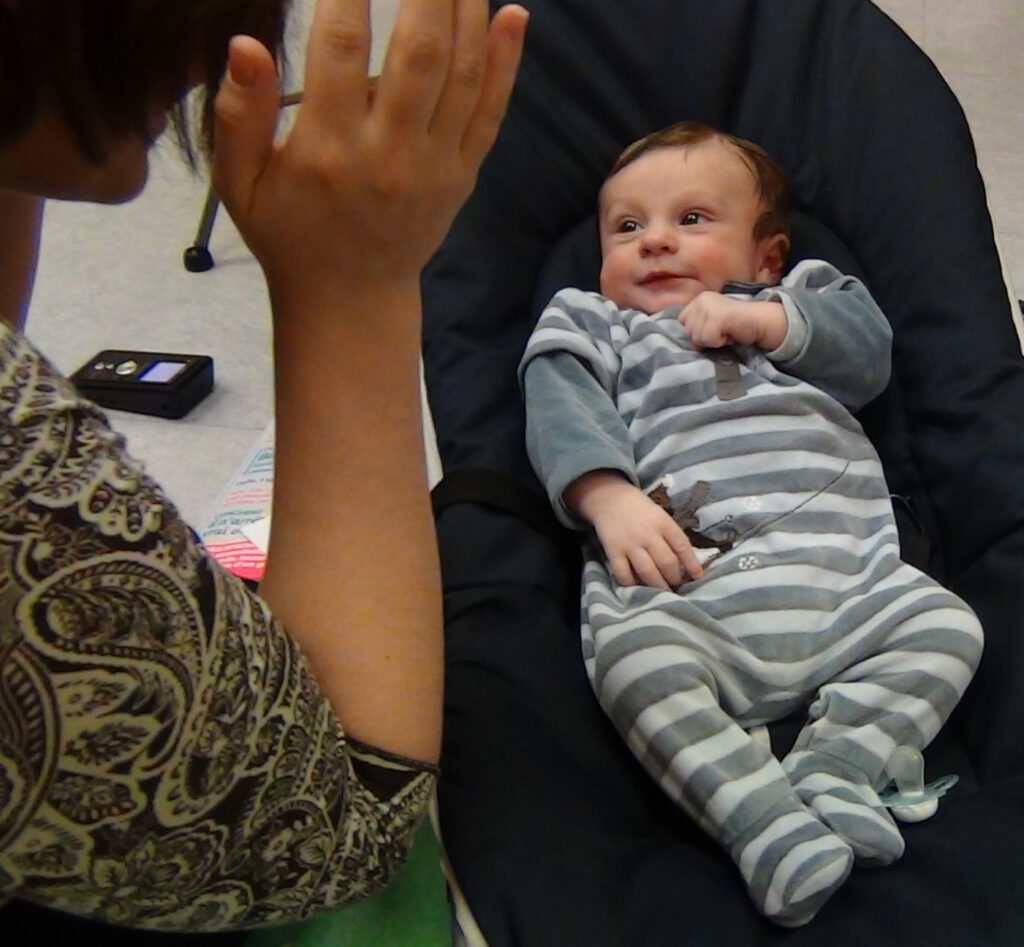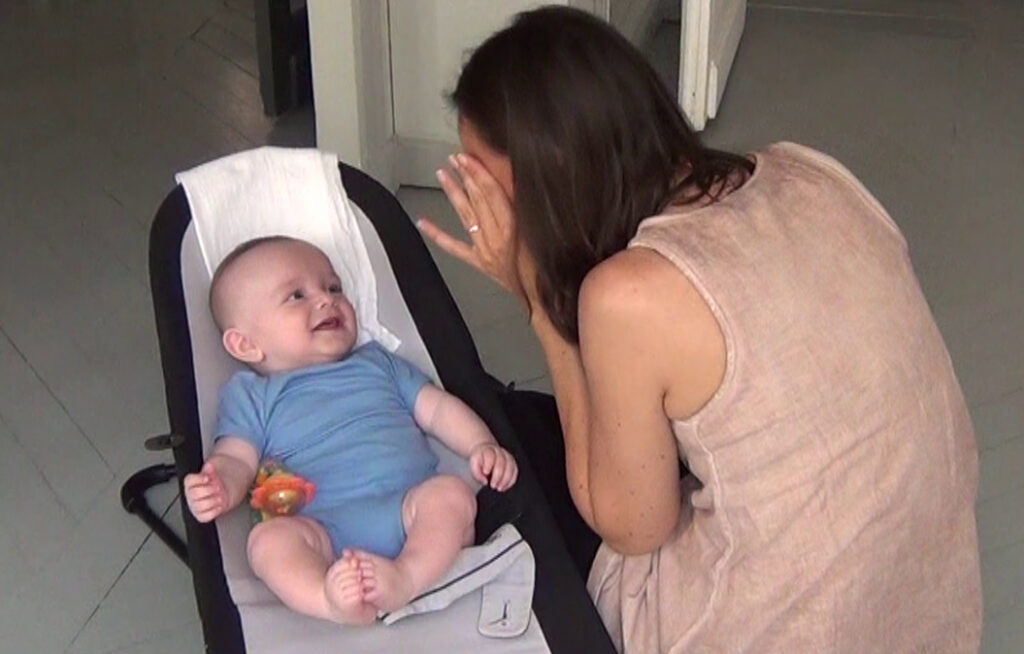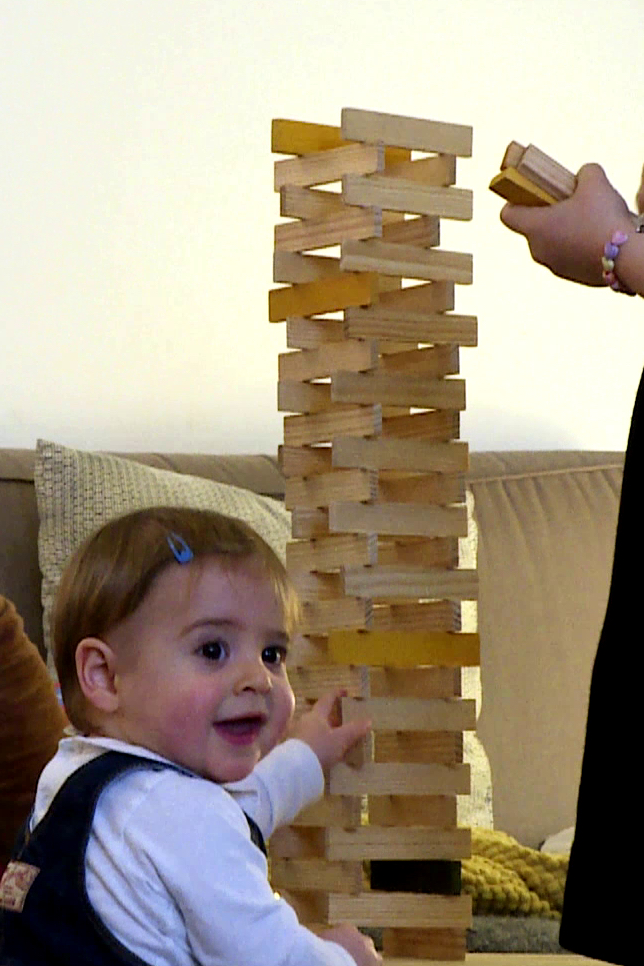TT Journal, ISSUE 6, September 2023
By Maya Gratier
Introduction: On playfulness
All of life can seem playful. Shadows play on rocks as light changes and shifts because leaves and branches are moved by wind and rays of sun are diverted by clouds. Butterflies playfully twirl, converge and swoop. The interplay of light and shadow is connected to the shape of branches and leaves, as well as to the force and direction of wind. But their precise connection is unfathomable, and so it is full of gentle surprise. That is perhaps why it is so delightful to watch. The interplay of butterfly and plant is a similarly haphazard choreography.
The movement of any creature appears to be playful because it is imperfectly connected to something beyond itself. Though an ant has agency of its own and is driven by vital tasks, its pathways arise in relation to terrain, weather conditions and unexpected events. To human eyes an ant’s pathway can appear playful. And indeed, young children’s sense of fun is aroused by the busy-body life of ants.
Do we project such ideas of playfulness onto the world around us, reading into the interplay of dancing light on the surface of a static rock? Or is all of life and living simply playful? In this paper I will explore what we mean when we describe play and playfulness beyond the human. I will start by describing the origins and development of human play in infancy and early childhood. After having identified some of its main characteristics, I will show how they permeate other domains in human and non-human realms. I will end by suggesting that human play is a manifestation of a much broader force that organically shapes interactions at various time-scales.

The origin of play in human infancy
Human play is associated with emotions of fun, joy and silliness. It is often described as the opposite of seriousness and therefore thought of as frivolous or superfluous. Yet studying play in the life of the young has revealed a very different picture.
Humans are at their most playful in childhood and the ability and motivation to play is evident in the first months of life, before infants are capable of independent locomotion or speech. Many other animals play when they are young[1]. Play is thought to prepare the young for the seriousness of adult life, teaching them to tackle or avoid danger[2]. It is, according to many recent theories, both vital and adaptive, a matter of survival. And the argument is developed further by considering the emotions of play. The fun, exhilaration and exuberance associated with it serve to feed our dopamine-driven brain centres of pleasure and reward, even in non-human animals[3]. The main function of these emotions is to create a kind of addiction, in order to keep the young busy, perfecting the art of play which is really a kind of work in disguise.
The very first form of play in human development is sensorimotor social play occurring in face-to-face and body-to-body engagement. Tickling, disappearing and reappearing, making unexpected sounds or facial expressions are widespread laughter-eliciting strategies used by adults. The game of peekaboo and its myriad variants exists across the world’s cultures and is highly effective in producing joy and shared excitement[4]. By the age of one, infants can take the lead, reversing the roles of hider and seeker. Then they laugh not because they are surprised by the partner but because of the surprise they are causing in the partner. Infants become more playful because they intentionally aim to trick the partner, messing with their private beliefs about presence and duration[5].
Beyond wondering whether peekaboo is a form of play at all, let us ask why it is pleasurable and why it makes us laugh, from early infancy onwards. What social games have in common is the setting up of expectation. Laughter waxes and wanes as a function of anticipation, with the cyclical ebbing of tension and excitement. Suspense and release are the kernels of social play. But too much or too little suspense push and pull towards fear and boredom. Fun arises out of the right dosage of predictability and surprise.
It seems then that there is pleasure in finding that balance, and perhaps even more so at finding that balance with another person. In peekaboo play, adult and infant wordlessly agree on the rules of the game[6]. They also agree on how to play it, that is they can together make the rules evolve over time. While they play, they become coordinated, anticipating each other’s moves. As infants grow older and more and more able to recognize the existence of divergent subjective perspectives, they also come to anticipate the partner’s anticipation of their own moves. By the end of the first year, the infant seems to think “I know you think I’m going to reappear now but… “. Peekaboo play fosters affiliative experiences of complicity and connivance. It is surely an invaluable cement for the growing and changing relationships between infants and adults.
What about laughter? What makes peekaboo play funny? Peekaboo play shares important features with joking and other forms of humour. We laugh at a joke because it offers something unexpected or incongruous. The unexpected outcome takes us by surprise, we lose our balance, so to speak, and then re-stabilize. A joke also works because it is well-timed. The punch line, the surprising image, must be delivered not too soon and not too late. Funniness and laughter are conditioned on a window of opportunity. Jokes fall flat when they occur outside that window. Jokes are joyful and playful. Verbal jokes, even when they involve abstract concepts and specialized cultural knowledge, rely on some of the same processes as sensorimotor social play, namely timing of the unexpected.
Other forms of play are crucially important for the development of human intelligence through learning and relating. Infants play alone to discover the affordances and habits of material objects. Building and destroying towers of wooden blocks is endlessly amusing, for a while. In the second year of life, children start to engage in pretend play, taking objects for what they are not and then as they grow older inventing wild stories while they move objects around spaces. Play, in its various forms throughout childhood, is considered to be a crucial foundation for thinking[7].
Much focus has been put, in developmental psychology, on the cognitive aspects of pretend play because it draws the mind into spaces and temporalities that are imagined and symbolized. Play takes us, humans, into worlds of meaning beyond the immediate. When comparing ourselves with other animals, such play clearly appears as more specifically human, though perhaps it is not exclusively so. But the way we, already as young children, enter those worlds of symbolic meaning, unmoored from our present material circumstances, is connected to the way in which younger infants and perhaps other species experience fun and joy through sensorimotor play. Once again, what symbolic or pretend play shares with sensorimotor social play and jokes is timing. And beyond the localized variations of the (un)expected event, they depend on a longer-term balanced sequencing of events that organizes the passage of time. It is interesting to note that children’s pretend play is not entirely different from theatre where actors sequentially play out scenes and roles in a more or less codified performance space.


Play, variation and sequencing
It appears that play is not so much a type of behaviour, including various sub-types, as it is a time-bound process. Gregory Bateson was one of the most important and original theorists of play. He considered play as a fundamental mode of communication, where its function is not to transmit messages but rather to share the experience of tacitly agreeing on the process of communication itself. This is what he termed ‘metacommunication’[8].
Defining play as an ability or as a set of behaviours, even ones involving unobservable emotional states and mental representations, cannot be sufficient to grasp its importance. Play unfolds in time. A static image can be funny but it cannot be playful. A sequence of images can be playful because it teases our imagination, sets it into motion and propels it into a temporal realm.
Nor is variation in itself sufficient for the arising of playfulness. Sensorimotor social play offers a framework for grasping this. It is not just the pin-point timing of an action that is effective in eliciting joy, it is the timing of a sequence of actions relative to each other. There is an internal grammar to playing, components of a game are organized and one can thus abstract the rules of a game. Actions are sequentially ordered and if that order is disturbed the game loses its identity. Similarly, if you permutate musical notes in a melody, the melody itself is lost. But the abstract structure of the game becomes play because its parts are varied and put into relation, shifting and gliding along multiple dimensions (intensity, discrepancy, originality). There is not much fun to be had in reading the rules of a game! Notes become music because in being strung together along multiple flexible dimensions (pitch, timbre, amplitude) they acquire a dynamic relationality that imparts a kind of vitality or aliveness[9].
Play or perhaps more accurately playfulness, that is the quality of feeling associated with play, arises out of a flexible sequencing of actions, events, ideas, words. It requires surprise as well as predictability and it follows from this that play is seldom a solitary phenomenon. Perhaps the possibility of playing alone is a very human myth or illusion. We play alone in a fictional fantasy world, where we have in fact recreated the conditions for a complex relationality – with other characters, with spaces and objects, with events. When a young child plays alone with blocks of wood, it is not actually being playful. But when someone else watches and anticipates the moment the tower of blocks will fall, the child acquires a new glint in the eye and a gleefulness which is the sign of real play – which is also always playful.
Play is a relational phenomenon, whether it involves relations between feeling, thinking human beings, whatever their age, absent or present, or between any living organism endowed with some form of agency. And at another level, anything can be described as playful because things are put into relation – actions, events, ideas, words, objects – beyond the individual entity. By becoming flexibly organized, a whole sequence acquires the quality of playfulness, putting into relation separable entities, such as a parent and a child or a butterfly and a plant.

Flow and stillness, at play
Infants learn the flexible sequencing and micro-variations that bring about pleasure and joy in sensorimotor social play. Over the first year they become expert at controlling their actions with split-second precision. That is why they hold their parents’ attention. With mastery of the timing of their own body movements comes the propensity to orchestrate encounters with other people. In some sense, that is when the tug-of-war begins between parents and children, though it is a playful tug-of-war. It does not await adolescence. Playing is also about gaining and releasing control and it brings into focus patterns of domination that can themselves impede and rigidify playfulness.
Play teaches children about the flow of time. Perhaps it is an essential experience for connecting past, present and future and can thus be thought of as the foundation of an architecture of extended time. Within a year, play has carried the child off into the worlds of fiction that gradually hold their own time, their own past, present and future. Older children learn to manage multiple time-scales. They can move with ease from the time of their own life to the time of an imagined life, from anticipating the next move on a chess board to anticipating their tomorrow.
Play makes time flow because it organizes events in a flexible way. When an infant plays peekaboo, the flow of time changes. It slows down when all is in suspense, when the mother’s face is hidden from view, at the height of the ‘Peek’ part of her utterance. Movement stills, sound stops. It is as though time itself has stopped. And then suddenly, it picks up again and even accelerates. The “boo” gushes forth and with it comes the release and the laughter. I would like to call this variable organization of sequences in time, the organic flow of time.
Play requires stillness. It cannot be all excitement and fun. Excitement follows suspense. Suspended time can feel like stopped time. But it is in fact a time that prepares the future, a very full time. It tells us something about the importance of being idle and of letting time do its work beyond what we think we can control, preparing growth and change. Perhaps regeneration too. So there is a stillness at the heart of play that is worth considering.
Because children come to know that time flows and how it flows, they also come to grasp the idea of fixity, of absolute being that can seem disconnected from time, place or context. Our words induce such ideas of fixity. “Chair” appears as a fixed, immutable thing floating in its own neutral mental space. Concepts have a strange fixity, as do numbers and physical objects. But is a rock still? Is the rock with the light dancing on its surface really still? Perhaps it is not as still as we think it is. Perhaps it is participating in some form of play – or playfulness – because it is connected to the ground it rests on and to the light projected onto it. After all, at some point the rock got to where it rests and getting there was a matter of relational action, the eruption of lava, the slow force of running water, the sudden loss of balance.
Perhaps the fixity of concepts is an artifice in the way that running water can appear still in a deep pool before cascading on, downhill between the rocks. Wittgenstein famously described knowledge and its degree of certainty as rocks and sand on the bed of a river[10]. Wittgenstein also understood language to be a game of sorts, organized by internal shareable rules. But what I wish to point out here is different. It is simply that by becoming overly concerned with the seemingly fixed contents of our minds, we forget to take part in the flow of time and life around us. We become less and less connected to the playfulness of life itself and thus miss out on a great source of joy that is freely available to all who are willing to dip back into the pool of time. And stillness is always nothing more than extreme slowness.
If we can accept that a rock, in its extreme stillness verging on fixity, is in fact an element within a vast dynamic ensemble at play, then we must admit that inanimate things and animated beings influence each other. We must begin to accept that the material world that composes an environment is not static and passive. The difference perhaps has more to do with various ways in which time generally flows: extremely slowly for a rock, extremely fast for a butterfly – from the relative perspective of human temporality. The very idea of play, if we agree to stretch it to its limits, puts into question the duality between subject and object or between the mental and the material. Objects do not merely afford specific actions, in the way a cup handle invites our fingers to curl around it, they also organize a series of bodily adaptations based on complex polysensory feedback systems. In this sense, a butterfly’s flight is shaped by the tall grass swaying in the wind and the young child’s actions and imagination are shaped by the toys it plays with, which themselves have been shaped by other people and by technologies, whether made with hands or automatized machines.[11]

Play beyond the human: both fact and fiction?
If time can flow differently for a rock and for a butterfly, in a very general sense, because they exist within different yet interconnected time-scales, it also flows variably within a moment of existence. Focusing on the life-span of a butterfly, honing in on a single minute within that short life, we may note how the interactions between it and its material world constitute the organic flow of time for that butterfly in that moment (whether or not it has any awareness of it). Time flows faster as the blade of grass sways towards it and slower when the wind dies down and the grass is still.
I would like to end this paper by suggesting that regardless of whether butterflies are playing as they dance through the tall grasses or simply going about the serious business of surviving as a butterfly, it is useful for us humans to see them, and the rest of the living planet, as playful. Acknowledging the importance of play draws awareness to the complexity of the connections between us and our umwelt[12], between us and the very mundane characteristics of our seemingly fixed material surroundings.What is there around us? Attributing fixity to objects and to concepts reinforces the great divide we have invented between a ‘natural world’ that encompasses the multitude of species of plant, fungus, bacterium and animal as well as geologically formed ‘objects’ and a ‘human world’ that involves thinking, imagining, playing, inventing – science and culture. Perhaps it is time to acknowledge that we are all connected through the essential features of play.
[1] For an overview of research on animal play see the 2015 special issue of the journal Current Biology called ‘Biology of fun’: https://www.cell.com/current-biology/issue?pii=S0960-9822(14)X0025-4#BiologyofFun25thAnniversarySpecialIssue
[2] Bekoff, M., & Byers, J. A. (Eds.). (1998). Animal play: Evolutionary, comparative and ecological perspectives. Cambridge University Press.
[3] See research by Jaak Panksepp on laughter and fun in playful rats as described in this book: Panksepp, J. (1998). Affective neuroscience: The foundations of human and animal emotions. Oxford University Press
[4] Fernald, A., & O’Neill, D. K. (1993). Peekaboo across cultures: How mothers and infants play with voices, faces, and expectations. In K. MacDonald (Ed.), Parent–child play: Descriptions and implications (pp. 259–285). State University of New York Press.
[5] Parrott, W. G., & Gleitman, H. (1989). Infants’ expectations in play: The joy of peek-a-boo. Cognition & Emotion, 3(4), 291-311.
[6] Bruner, J. S. (1975). Peekaboo and the learning of rule structures. Play: Its role in development and evolution, 277-285.
Rochat, P., Querido, J. G., & Striano, T. (1999). Emerging sensitivity to the timing and structure of protoconversation in early infancy. Developmental psychology, 35(4), 950.
[7] Sparaci, L., & Gallagher, S. (2023). A Kaleidoscope of play: a new approach to play analysis in childhood. Philosophical Psychology, 1-30.
[8] Bateson, G. (2000). Steps to an ecology of mind: Collected essays in anthropology, psychiatry, evolution, and epistemology. University of Chicago press.
Bateson, G. (1972). A theory of play and fantasy. MIT Press. Boston, MA.
[9] See Daniel Stern’s theory of vitaly dynamics in
Stern, D. N. (2010). Forms of vitality: Exploring dynamic experience in psychology, the arts, psychotherapy, and development. Oxford University Press, USA.
[10] Wittgenstein, L. (1969). On Certainty, edited by G.E.M. Anscombe and G.H. von Wright, translated by D. Paul and G.E.M. Anscombe, Oxford: Basil Blackwell.
11] For interesting theories along these lines see
Malafouris, L. (2013). How things shape the mind. A theory of material engagement. The MIT Press
Morton, T. (2011). Here comes everything: The promise of object-oriented ontology. Qui Parle: Critical Humanities and Social Sciences, 19(2), 163-190.
[12] von Uexküll, J. [1934] 2010. A Foray Into the Worlds of Animals and Humans with a Theory of Meaning. Minneapolis: University of Minnesota Press.
Maya Gratier is professor of developmental psychology at the University of Paris Nanterre in the Ethology, Cognition and Development Research Lab. Her research focuses on the development of face-to-face communication in early infancy and in particular by studying vocal coordination.
https://babylab.parisnanterre.fr/
https://www.facebook.com/BabylabNanterre
